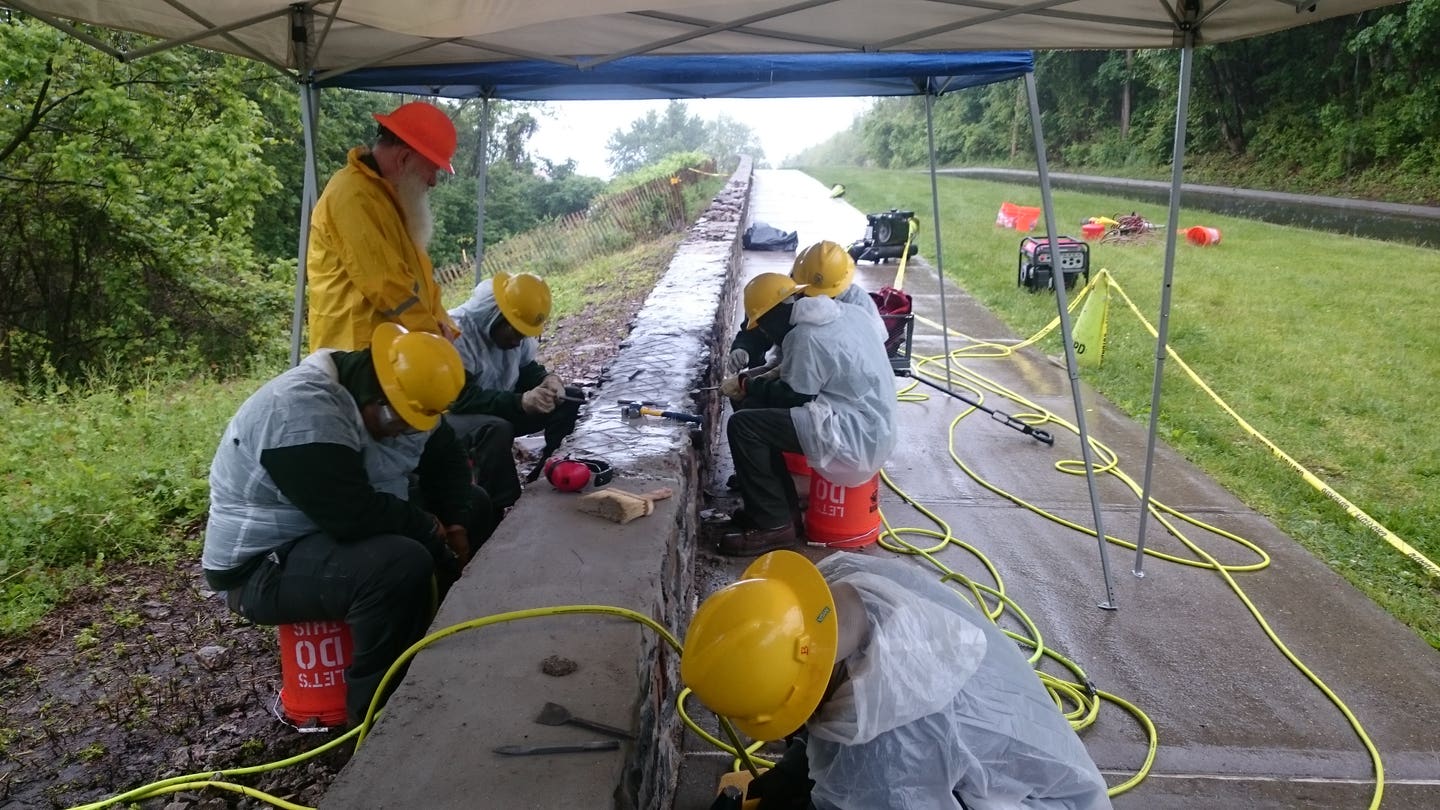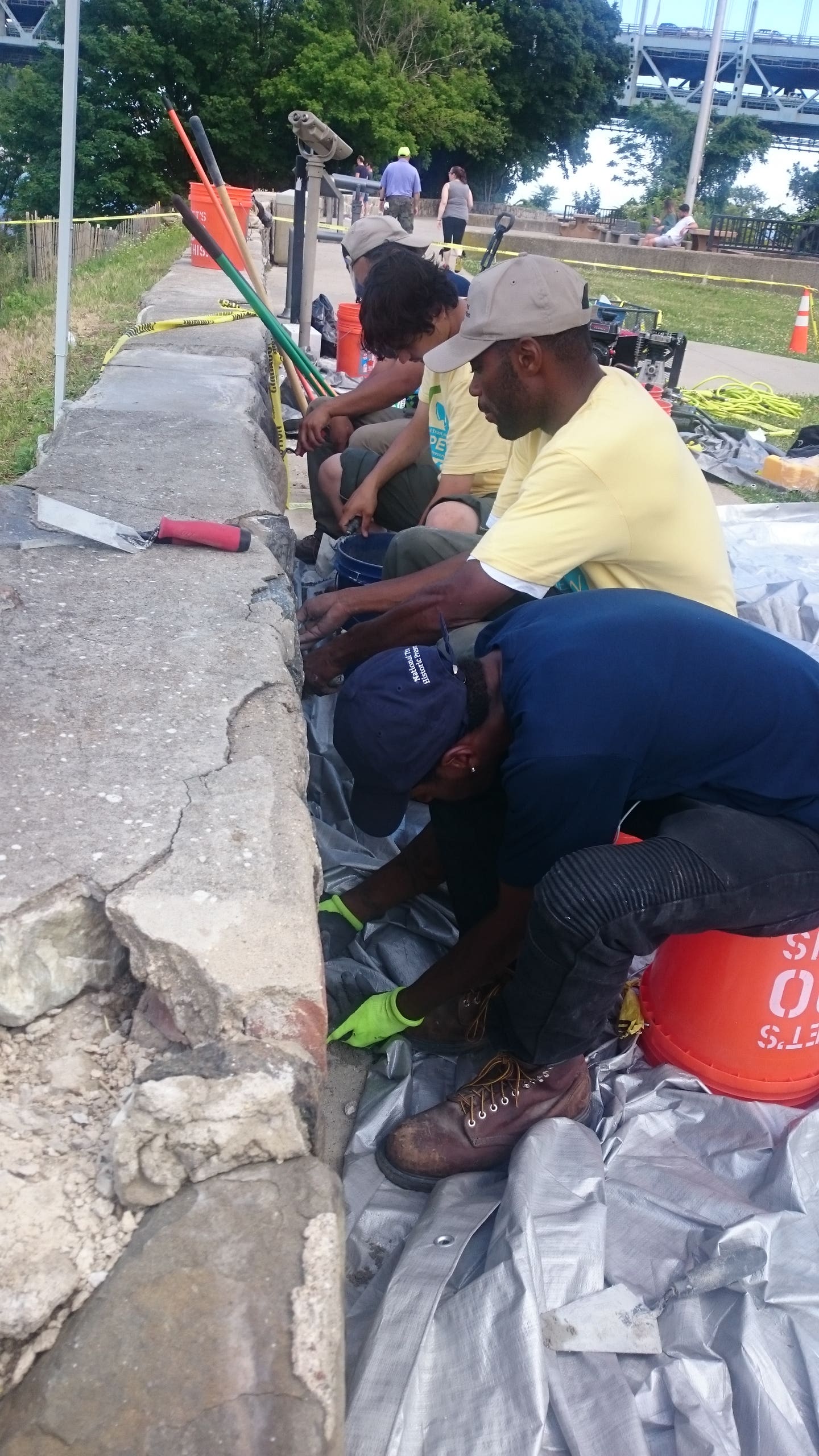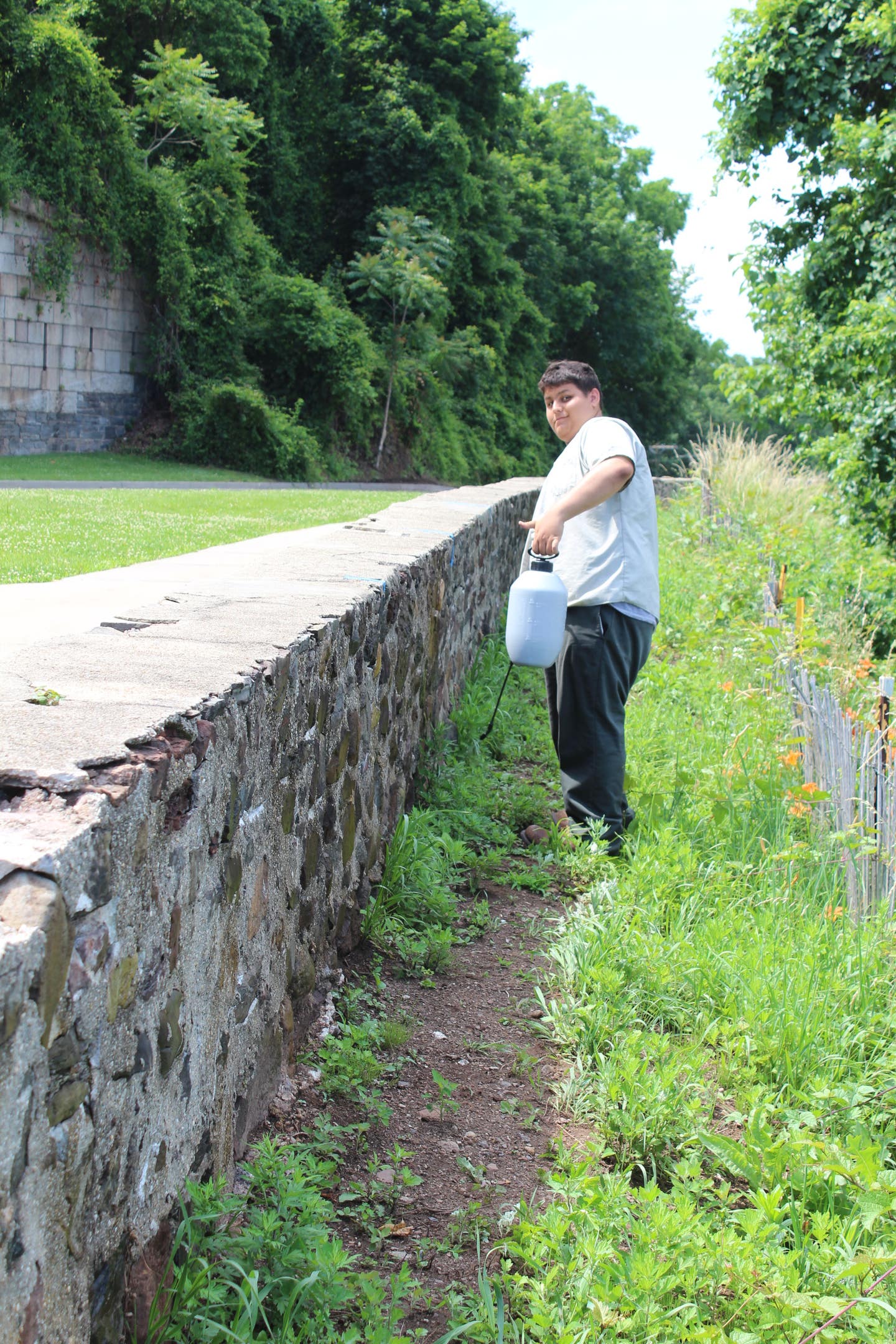
Ken Follett
Hands on Preservation Experience
I appeal to traditional trades practitioners to take notice of an initiative of the National Trust for Historic Preservation and to consider signing up on HOPE Crew projects. HOPE is an acronym for Hands on Preservation Experience. I will suggest out a few misperceptions that I have encountered and give expression as to why they are incorrect viewpoints.
A few years back the Trust initiated a hands-on preservation activity that involves a mix of volunteers and youth, including veterans, who come to the program, hired on for projects through The Core Network, and teamed up with a craft expert. Many of these are in partnership with the National Park Service. That is one model.
Their other model is to partner with specific historic sites and to organize massive non-professional volunteer work events, engaged with craft professionals.
I have been involved in three HOPE Crew Projects. The first was Chalmette National Cemetery in Louisiana, then Fort Wadsworth on Staten Island in New York, and the third was at Fort Wayne in Detroit, Michigan. All three projects varied, and my relationship to them in each case also varied. This last summer the HOPE initiative completed its 100 project.
My initial reaction on learning of HOPE Crew was negative. In my 4-plus decades in construction and the preservation industry, from the vantage of a tradesman and a contractor, as well as my involvement with the Preservation Trades Network, with an interest in education, I have been exposed to quite a few inspired programs that bounce up, proclaim all sorts of goals, enlisted my support, advice and participation and subsequently fell far short or abruptly and quietly fell apart. So, first reaction, “Is this program another one of those?”
Of what happens during the day on-site, and the days afterwards, this program is not one of those.



The difference is in the balance between the necessary hype for a program in our world of media saturation and survival being gaged by how much attention is garnered (like a large volume of tweets), and the very grounded perspective of the person who is responsible to manage the initiative. Large numbers of our citizens are being exposed to historic preservation in a tactile manner that they otherwise would only read about, or watch on television or YouTube.
Unfortunate, but largely true, the National Trust is perceived by traditional trades practitioners as irrelevant. This is sad. The HOPE Crew program changes that dynamic through enabling the hiring for pay of experienced traditional trades, in coordination with diverse teams, to lead projects, and to teach, and to do so outside of a classroom, in real-work environments.
I was involved at one time with a program that sought to attract volunteers to work on historic properties, as we all know that funding can be very sparse and there is never an end of tasks to maintain our heritage assets. As a traditional trade practitioner, I had the hardest time convincing the board, of which I was a member, that they had to put a focus to connect volunteers with experienced craftspeople. Volunteers let loose without informed guidance do more harm than good. The organization did not get the idea. They were well-meaning, well funded, but not hands-on folk. Eventually I walked. The HOPE project has this element right.
Then there is the perception that programs such as HOPE take work away from those who struggle to survive in the traditional trades.
What I have seen is that the projects that the crews and volunteers are matched up with are not of a sort that either by dint of the type of the work (maintenance) and the climate of sparse funding, or organizational claptraptions that make outsourcing of work prohibitive, that the hired Corp crews or the volunteers are taking work away from traditional trades practitioners.
The reality is that the trades would never get this work, not even in an alternate universe. Be happy.
I remember as a contractor in restoration work in New York City when the stone carving yard was being developed at St. John the Divine. I have friends who were involved. My first impression was, “Oh, good, they are going to teach kids how to carve stone and build the cathedral. Not a bad idea.”
My next impression was how come I had at least a dozen quite fancy folder brochures from the program advertising the merits for non-profits, such as museums, religious sites and public institutions to hire on their wonderful work crews. It certainly felt like, and was for me at the time, direct competition. The program abruptly imploded. Harm in these endeavors is along the lines that in a few decades of work on Episcopal structures I was warned to never, ever bring up the idea to initiate a youth training program.
From May to November of 2017 myself and business partner, David Follett, have been the designated craft experts to guide and education a HOPE Crew in coordination with the Conservation Corp of West Virginia, the Core Network, and the National Park Service in the masonry repointing of a landscape wall at Fort Wadsworth, Staten Island, New York.
Ken Follett is a founding member and 1st past president of the Preservation Trades Network as well as a longtime member of APTI and APT Northeast. Based in Putnam County, NY, his work is primarily in the NY/CT/NJ region with occasional stints in places such as Washington, DC, and Coloma, CA. His trade background is in masonry with an emphasis on playing with stone. Beyond stone, Ken has several decades of contract experience in project estimating, administration and management. Most notably in terms of education was his two and a half years as clerk-of-the-works on a $20M redevelopment project in Harlem for the NYC Transit Authority.
Currently Ken works in partnership with his son David Follett to provide in-field support services to structural engineers, architects and conservators in their design investigations of existing and historic structures. As a hands-on project consultant, Ken assists project teams in resolution of heritage conservation problems, most recently to resolve a project-killing issue for the award winning Eberhard Pencil Factory buildings at 58 Kent Street in Greenpoint, Brooklyn. Ken also gets involved in small projects, such as deconstructing and reconstructing a Stanford White fireplace, designated mason in a Guastavino tile vault workshop, righting a tipped cemetery obelisk, or matching an existing custom stucco recipe. Ken also works with heritage contractors as well as materials suppliers, assisting them in their business development.
For eighteen years Ken was executive vice-president of a specialty historic restoration contracting firm in Brooklyn, NY. In the role of contractor Ken was responsible for the negotiation, planning and project management (for which Christian & Son was a team member) to relocate Thomas Edison’s #11 laboratory building from the Henry Ford Museum in Dearborn, MI, to its original site in West Orange, NJ. Of similar note was assisting the design investigation team for the Edison Memorial Tower in Menlo Park, NJ (a John Early concrete panel structure). He was also involved in the preconstruction and probe investigation activities for both the New Amsterdam Theater and the Grand Central Retail Redevelopment projects in NYC. Another project of note, involving public art, was the demounting and conservation of the Paul Manship Medallions from the NY Coliseum that were relocated and mounted at the Brooklyn Battery Tunnel Ventilation Building in Manhattan at the north side of Battery Park. Ken was the contractor and project manager for the multiple award winning exterior restoration of the Barnes & Noble corporate headquarters at the north end of Union Square in Manhattan, New York.
As a writer Ken has over the years published in a number of venues including Traditional Building, Building Renovation, CRM, APT Bulletin and APT Communiqué. Otherwise Ken speaks in public rarely, prefers to encourage and enable the more bold and outspoken, and even more rarely will direct a workshop (estimating for heritage conservation work)… though he has organized quite a few workshop and work experiences for others.
Experienced in contract procedure with the following public agencies: NYC Historic House Trust, GSA, U.S. Navy, U.S. Marine Corps, US Coast Guard, National Park Service, FDA, HUD, NYCTA, MTA Bridges & Tunnels, NYC DDC, and NYC Parks.






